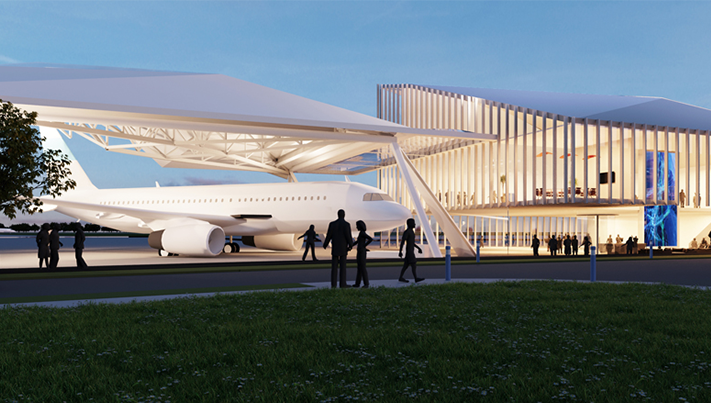
WORK has started on the brand-new £65 million research facility for digital aviation at Cranfield University with support from the Birmingham office of built environment consultancy Curtins.
The new Digital Aviation Research and Technology Centre (DARTeC) will develop ways for aircraft to monitor, test and upgrade their own systems and structures, as well as looking at the future of the passenger experience from
The team’s main focus has been on the creation of a large canopy that will provide protection for an
The canopy and building roofs mirror each other to form matching ‘stealth fighter’ profiles when viewed from above. The roof comprises
The canopy is supported on three inverted V-shape columns with an arrangement of
Associate Matt Woodhall is leading the design of the project from
“The structure of this new research centre is a really interesting structure with a truly unique roof design. The canopy produced needs to be able to house a full-size aircraft, as well as being a functional and cutting edge research facility.”
Collaborative open plan office space operates alongside technical laboratory platforms and research facilities. The double storey atrium provides an informal break out feature, encouraging staff and students to share and engage ideas. The building will house some of the latest aviation technology, from radar equipment to autonomous drones.
Professor Graham Braithwaite at Cranfield University said: “Digital Aviation Research and Technology Centre (DARTeC) will be a flagship research facility that will help unlock the potential of digital aviation. Working with our partners in DARTeC, we are looking to develop new digital solutions to tackle the challenges of over-capacity in both airports and airspace, develop improved passenger experiences and create more sustainable air travel.”
The building is expected to be completed next year, and open in 2020.
Find out more at http://www.curtins.com/? or join the conversation at @CurtinsConsult.





























